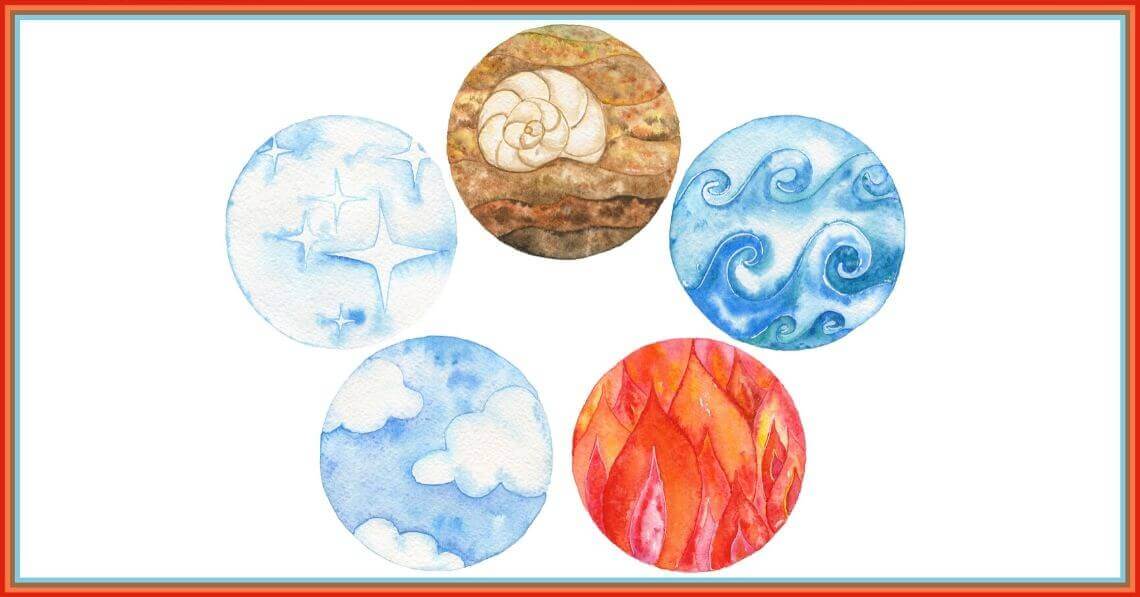You can admit it–we’re not going to judge. The term Ayurveda is just about everywhere these days, and you can’t quite figure out what it means exactly. Heck, you’ve barely figured out how to pronounce it.
Ayurveda translates from Sanskrit to the science of life. It’s an ancient healing system that originated in India. It’s rooted in the belief of balance between the body, the mind, and the spirit, as well as a deep connection to the environment that surrounds us.
The concept is familiar for many people, even if the name isn’t that familiar, and it’s clear to see why so many people are connecting with this concept.
The Beliefs of Ayurveda
Ayurveda holds five elements as the core of its beliefs. These elements come together in different ways to form everything from the way you are uniquely you to the way the seasons change.
The elements are called the Pancha Maha Bhutas:
♦ Earth: The earth is not just the planet as we think of it, but in the body, it’s the solid, foundational part–like your skeleton.
♦ Water: Water flows across the planet, and is also part of your body in the form of blood and energy.
♦ Fire: Fire represents energy, heat, and transformation. It’s found throughout the planet, the sky, and in your digestive system and emotions.
♦ Air: Oxygen flows through and around us, and it connects us to the atmosphere with motion and lightness. It is the essence of respiration itself.
♦ Ether or Space: This is the expansive emptiness that exists between cells and objects, and it’s thought of as the true self and intelligence.

The interplay of these five elements is believed to be the foundation of the universe, from very small atoms to the entire expanse of the universe itself. Further categorizing the elements are the Three Doshas. They are the basic types of functioning principles, and when they’re in balance, life is good.
If the Three Doshas are out of balance, it’s believed there is disharmony and potentially death. While every person has Three Doshas, two of them tend to be dominant, and they determine the character of that person.
♦ Vata: This is the combination of air and ether. A person who is closely associated with Vata tends to be light and thin. In balance, they’re very creative and easy-going. Out of balance, they are anxious and may have poor digestion and mental health problems.
♦ Pitta: Fire and water come together to form this Dosha. A Pitta person is more muscular and is seen as warm and outgoing when in balance. An out of balance Pitta personality can be very hotheaded and can suffer from heart disease and high blood pressure.
♦ Kapha: This is a combination of water and earth. The Kapha person is heavier and more grounded. They’re the people you go to for calm and stable advice when they’re in balance. When they’re out of balance, they can be possessive and greedy and suffer from obesity and respiratory problems.

If you already see your personality traits in one or two of the Three Doshas, you’re not alone. Most people can quickly identify themselves, and this is great because it helps you start living an Ayurvedic life by choosing to make diet and lifestyle choices that will put you on a path of harmony or balance.
How to Balance Your Doshas
There are tips for all Three Doshas to find the best level of balance and customize it. Because Ayurveda supports the idea that people are unique and combined with different amounts of the elements, your specific recipe will be customized to what resonates and works for you. It requires a little experimentation.
Vata Balance
The Vata person loves spontaneity, but unfortunately, it’s usually too much. Setting up a routine for meals and bedtime can help. It gives you a bit of flexibility for spontaneity but also keeps you grounded. Other tips include:
Limit your tech time, especially before sleeping.
♦ Eat seasonal foods.
♦ Try to slow your roll, and be more productive with one thing at a time.
♦ Aim to do more slow-paced fitness activities, like walking or yoga.

Pitta Balance
Emotional and physical heat can be your enemy. Keeping yourself cool is key to staying in balance. Other tips include:
♦ Have cream in your coffee. It cools the coffee and reduces acidity.
♦ Eat more leafy greens and less meat.
♦ Be actively athletic, but shake loose any competitiveness.
♦ Contribute to charity and work to help others.
♦ Allow yourself to focus on you.
Kapha Balance
Excess energy can build up and pull you out of balance. Using exercise to expel that energy is a good way to maintain balance, and can bring some inner heat into your life.
Other tips include:
♦ Be spontaneous, or at least try something new on a monthly basis.
♦ Cut back on dairy and carbohydrates.
♦ Eat more whole grains and vegetables.
♦ Try dry brushing to stimulate your lymphatic system.
If you’d like more tips for living a balanced life that focuses on physical, mental, and spiritual health, follow Live Conscious on Facebook @weliveconscious and Instagram @weliveconscious.

Waking Up To Wellness
The more you learn about Ayurvedic principles, the more you’ll begin to understand how this prescription for a balanced lifestyle can help you overcome your personal stumbling blocks and achieve your goals.
The best part is that it’s broad enough that there aren’t too many different classifications, yet personalized and customized in how you approach it and what path you choose to follow.
Remember that Ayurvedic medicine is one of the oldest forms of holistic medicine, and it’s a system that continues because there is truth in its beliefs and the balance of a person’s life.
For some, simply having a guideline on tips that can help them be their best selves is benefit enough to improve their lives. Feeling connected to the universe gives life meaning, and the benefits of that are immeasurable.









